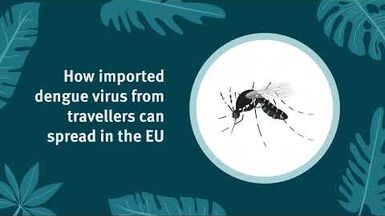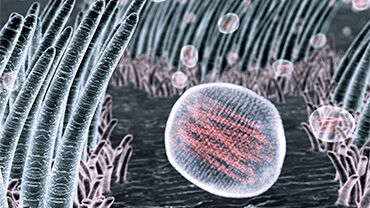Influenza virus characteristics, week 40 2024 to week 33 2025, EU/EEA
This report summarises influenza virological surveillance data from 30 European Union and European Economic Area (EU/EEA) countries from week 40 2024 to week 33 2025, as reported by National Reference Laboratories (NRLs) to The European Surveillance System (TESSy) at the European Centre for Disease Prevention and Control.
Executive summary
Detections
Within the reporting period, 354 455 influenza virus detections (sentinel and non-sentinel combined) were reported, of which 73% (257 761) were type A and 26% (90 873) were type B virus; another 1.6% (5 821) were reported untyped.
Of the 52 442subtyped influenza A viruses (20% of detected type A viruses), 31 638 (60%) were subtype A(H1)pdm09 and 20 804 (40%) were subtype A(H3). Of the 90 873 reported influenza type B viruses, the lineage for 9 279 (10%) was determined, with all except one virus falling into the B/Victoria/2/87 lineage. One
report on viral RNA belonging to the B/Yamagata/16/88 lineage was submitted. Attempts to culture or sequence this virus were unsuccessful due to a very low viral load.
A(H1N1)pdm09
For A(H1N1)pdm09 viruses, 17 countries reported 5 572 haemagglutinin (HA) sequences. All of the 5 560 sequences that passed quality filters fell in the clade 5a.2a (C.1) branch. A proportion of 16% were further characterised into clade 5a.2a.1 (D), represented by the 2023–25 northern hemisphere (NH) vaccine strain for egg-based vaccines, A/Victoria/4897/2022. Most (69%) of the 5a.2a.1 viruses carried T120A in comparison with A/Wisconsin/67/2022_Cell and belonged to subclade D.3, which is not represented by a reference strain; 19% belonged to subclade D.2, defined by the additional R113K substitution.
Among the 821 characterised A(H1)pdm09 viruses, the main reported categories were A/Sydney/5/2021-like, clade 5a.2a (C.1) and A/Victoria/4897/2022-like, clade 5a.2a.1 (D), representing 51% and 46%, respectively.
In total, 5 293 A(H1N1)pdm09 viruses were assessed for antiviral susceptibility to oseltamivir and/or zanamivir and/or baloxavir marboxil. Reduced and highly reduced inhibition by oseltamivir was detected in two (0.6%) and four (1.3%) of 317 phenotypically tested viruses. By genotypic testing, reduced and highly reduced inhibition by oseltamivir were observed for four (<0.1%) and 25 (0.5%) viruses, respectively, of the remaining 4 690 tested viruses. One of 4 714
viruses (<0.1%) showed genotypic reduced inhibition to zanamivir. Two (0.1%) of 3 048 assessed A(H1N1)pdm09 viruses carried genetic markers associated with reduced susceptibility to baloxavir marboxil.
A(H3N2)
For A(H3N2) viruses, 17 countries reported 4 279 HA sequences, of which 4 277 passed quality criteria and were analysed phylogenetically. All A(H3) HA sequences fell into the branch of clade 2a.3a defined by E50K compared with 2a.3 representative virus A/Norway/24873/2021; out of these, the majority (>99%) fell into clade 2a.3a.1 (J), represented by NH 2024–2025 egg-based vaccine strain A/Thailand/8/2022_Egg. Fifteen viruses belonged to 2a.3b and fell into subclade G.1.3.1. Within clade 2a.3a.1, the SH 2025 vaccine strain A/Croatia/10136RV/2023 represents subclade J.2, defined by N122D and K276E compared with NH 2024–2025 vaccine strain A/Massachusetts/18/2022_Cell. Most viruses (78%) fell into this subclade, 57% of which fell on a branch with the N8D amino-acid substitution that does not have a reference representative or subclade designation.
Among the 486 characterised A(H3) viruses, the main reported categories were A/Croatia/10136RV/2023-like, clade 2a.3a.1 (J.2) and A/Thailand/8/2022-like, clade 2a.3a.1 (J), representing 50% and 44%, respectively. In total, 4 267 A(H3N2) viruses were assessed for antiviral susceptibility to oseltamivir and/or zanamivir and/or baloxavir marboxil. Reduced inhibition by oseltamivir was detected in four (1.3%) of 298 phenotypically tested viruses, and reduced inhibition by zanamivir was detected in one (<0.5%) of the 292 phenotypically tested viruses. By genotypic testing, reduced and highly reduced inhibition by oseltamivir was observed for 12 (0.3%) and three (0.1%) of the 3 930 tested viruses, respectively, and reduced inhibition by zanamivir was observed for 10 (0.3%) of the 3 936 tested viruses. Three (0.1%) of 2 593 assessed A(H3N2) viruses carried genetic markers associated with reduced susceptibility to baloxavir marboxil.
B/Victoria
For B/Victoria viruses, 17 countries reported 4 292 HA sequences. Excluding 17 sequences that did not pass quality control, all B/Victoria sequences carried HA genes that fell into genetic clade V1A.3a.2 (C), represented by NH 2022– 2025 vaccine strain B/Austria/1359417/2021_Egg. The majority (58%) of viruses fell in the C.5.1 subclade, followed by 22% in C.5.7 and 19% in C.5.6. Additional minor proportions below 1% also populated subclade C.3 and C.5. For the subclades present in the reported data set, each contained a reference strain. Overall, B/Victoria evolution was characterised by multiple branches absent from defining amino-acid substitutions.
Among the 684 characterised B(Victoria) viruses, the main reported category was B/Austria/1359417/2021-like, clade V1A.3a.2 (C), representing 92%. In total, 4 063 B(Victoria) viruses were assessed for antiviral susceptibility to oseltamivir and/or zanamivir and/or baloxavir marboxil. Reduced inhibition by oseltamivir was detected in eight (3.6%) of 223 phenotypically tested viruses, and reduced inhibition by zanamivir was detected in six (2.8%) of the 215 phenotypically tested viruses. By genotypic testing, reduced inhibition by oseltamivir were observed for six (0.2%) of 3 473 assessed viruses. Genotypically reduced and highly reduced inhibition to zanamivir was reported in four (0.1%) and one (<0.1%) of 3 480 tested viruses (0.1%). One (<0.1%) of 2 699 assessed B/Victoria viruses carried genetic markers associated with reduced susceptibility to baloxavir marboxil.
Download








